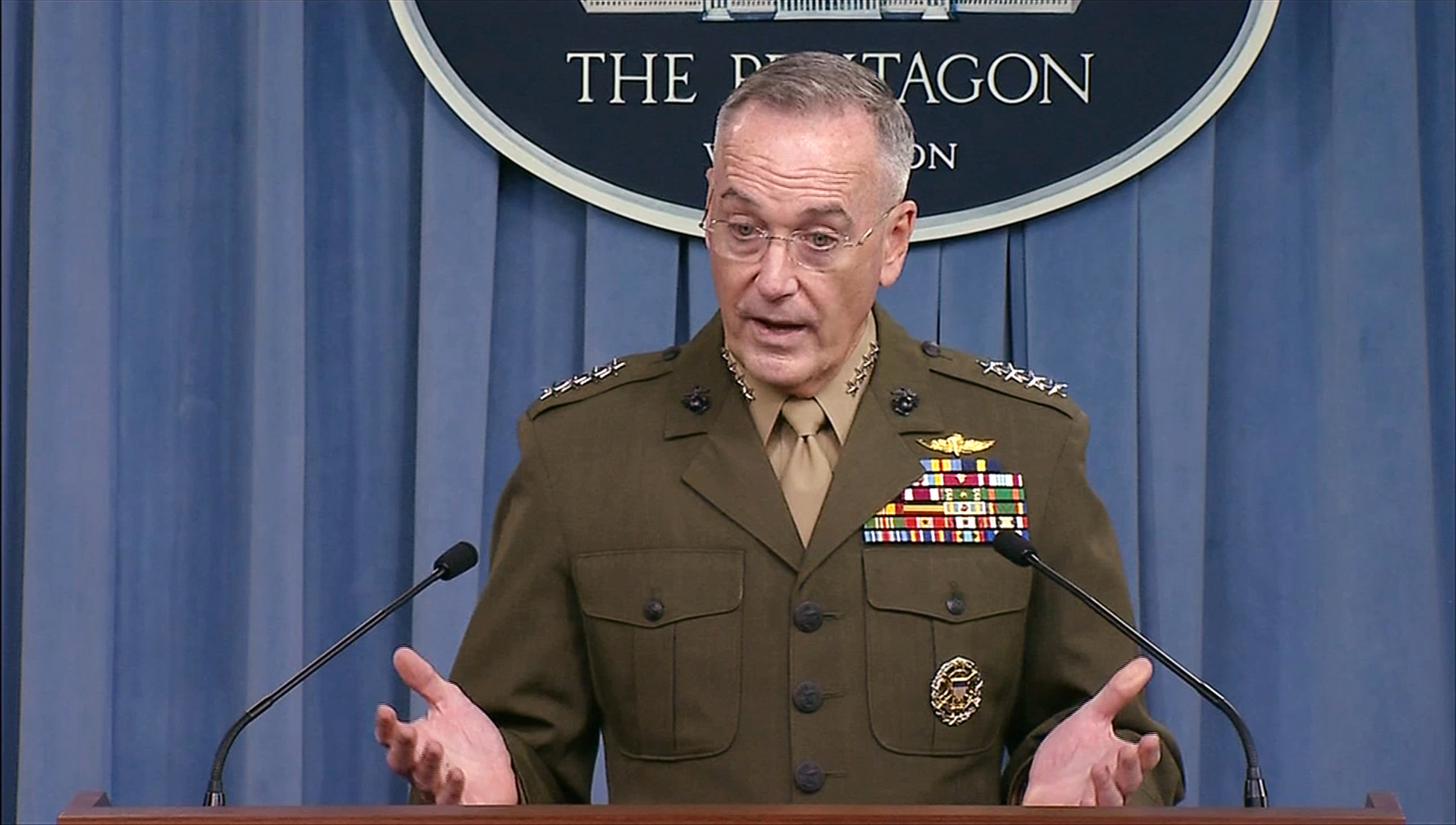 U.S. Joint Chiefs of Staff Chairman General Joseph Dunford speaks to the media about the deaths of four U.S. Army special operations forces soldiers in Niger during a news conference about the attack at the Pentagon in Washington. October 23, 2017. REUTERS
U.S. Joint Chiefs of Staff Chairman General Joseph Dunford speaks to the media about the deaths of four U.S. Army special operations forces soldiers in Niger during a news conference about the attack at the Pentagon in Washington. October 23, 2017. REUTERSBelow are the takeaways for the week:
- Al Qaeda’s affiliate in the Sahel gained the capability to attack secure targets outside of its primary area of operations in Mali. Jama’a Nusrat al Islam wa al Muslimeen (JNIM) conducted simultaneous attacks on the French embassy and the Burkinabe army headquarters in Ouagadougou, the capital of Burkina Faso, on March 2. ISIS is also raising its profile in the Sahel region by publicizing the October 4 attack by ISIS-linked militants that killed four American servicemen in Niger.
- Iranian officials are pressuring European signatories of the nuclear deal to thwart U.S. attempts to address the deal’s flaws. French Foreign Minister Jean-Yves Le Drian traveled to Tehran on March 5 to discuss the deal and Iran’s destabilizing regional behavior with President Hassan Rouhani and Foreign Minister Mohammad Javad Zarif. Iran hopes European partners will diminish the impact of any new and/or renewed U.S. sanctions on Iranian companies and European actors.
- Insufficient funding and regional instability may prevent the African Union Mission in Somalia (AMISOM) from advancing against al Shabaab. The leaders of AMISOM troop-contributing countries (TCCs) called for an extension of AMISOM’s mandate, citing concerns that the planned withdrawal of AMISOM forces by 2020 will allow al Shabaab to regain control of terrain. A spiraling political crisis in Ethiopia may cause the redeployment of Ethiopian forces from Somalia, straining AMISOM further.
